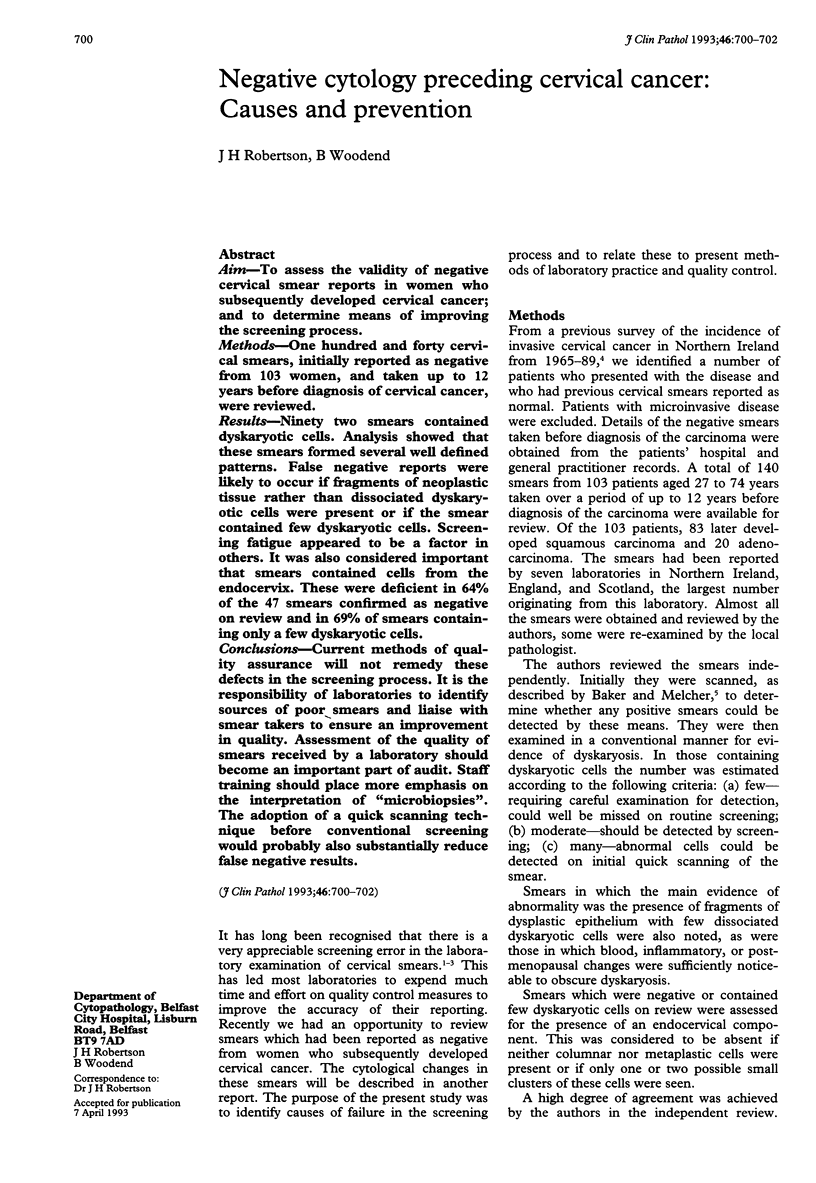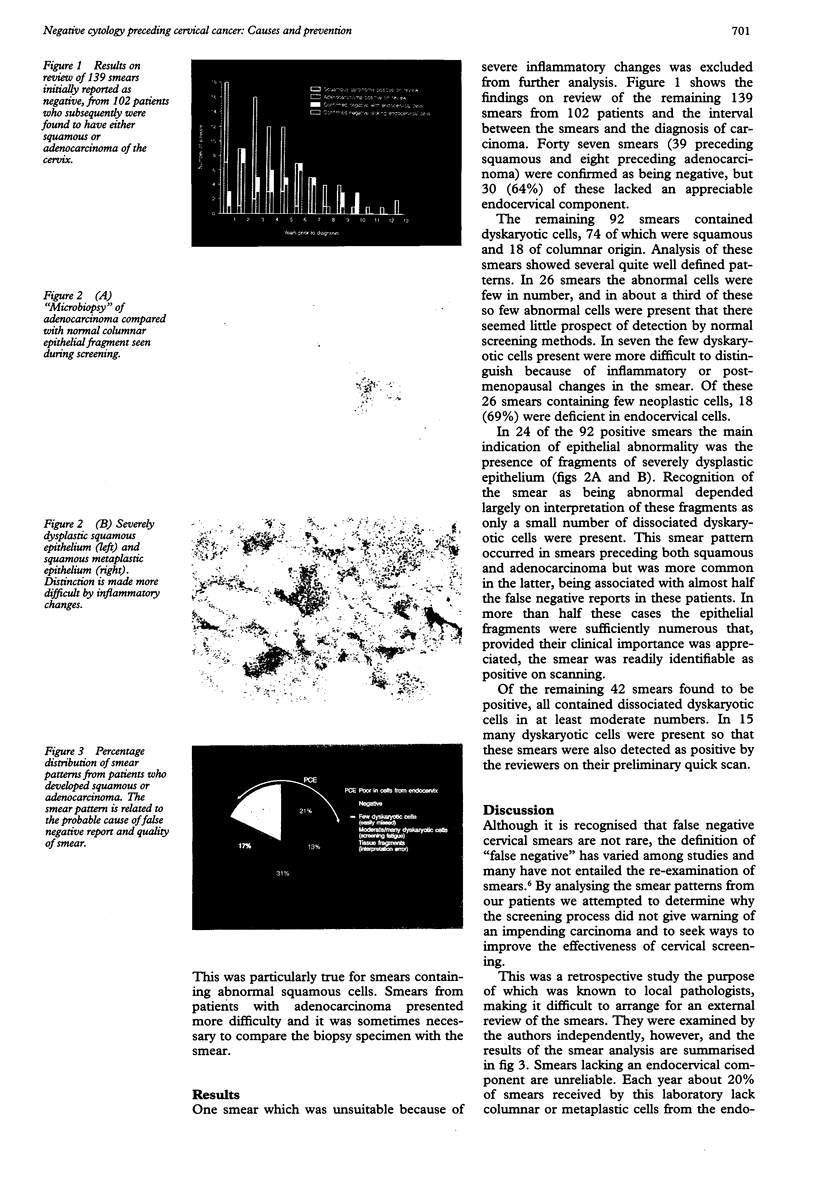Abstract
AIM--To assess the validity of negative cervical smear reports in women who subsequently developed cervical cancer; and to determine means of improving the screening process. METHODS--One hundred and forty cervical smears, initially reported as negative from 103 women, and taken up to 12 years before diagnosis of cervical cancer, were reviewed. RESULTS--Ninety two smears contained dyskaryotic cells. Analysis showed that these smears formed several well defined patterns. False negative reports were likely to occur if fragments of neoplastic tissue rather than dissociated dyskaryotic cells were present or if the smear contained few dyskaryotic cells. Screening fatigue appeared to be a factor in others. It was also considered important that smears contained cells from the endocervix. These were deficient in 64% of the 47 smears confirmed as negative on review and in 69% of smears containing only a few dyskaryotic cells. CONCLUSIONS--Current methods of quality assurance will not remedy these defects in the screening process. It is the responsibility of laboratories to identify sources of poor smears and liaise with smear takers to ensure an improvement in quality. Assessment of the quality of smears received by a laboratory should become an important part of audit. Staff training should place more emphasis on the interpretation of "microbiopsies". The adoption of a quick scanning technique before conventional screening would probably also substantially reduce false negative results.
Full text
PDF


Images in this article
Selected References
These references are in PubMed. This may not be the complete list of references from this article.
- Attwood M. E., Woodman C. B., Luesley D., Jordan J. A. Previous cytology in patients with invasive carcinoma of the cervix. Acta Cytol. 1985 Mar-Apr;29(2):108–110. [PubMed] [Google Scholar]
- Ayer B. S., Pacey N. F., Greenberg M. L. The cytological features of invasive adenocarcinoma of the cervix uteri. Cytopathology. 1991;2(4):181–191. doi: 10.1111/j.1365-2303.1991.tb00404.x. [DOI] [PubMed] [Google Scholar]
- Baker A., Melcher D. H. Rapid cervical cytology screening. Cytopathology. 1991;2(6):299–301. doi: 10.1111/j.1365-2303.1991.tb00504.x. [DOI] [PubMed] [Google Scholar]
- Bosch M. M., Rietveld-Scheffers P. E., Boon M. E. Characteristics of false-negative smears tested in the normal screening situation. Acta Cytol. 1992 Sep-Oct;36(5):711–716. [PubMed] [Google Scholar]
- Koss L. G. The Papanicolaou test for cervical cancer detection. A triumph and a tragedy. JAMA. 1989 Feb 3;261(5):737–743. [PubMed] [Google Scholar]
- Paterson M. E., Peel K. R., Joslin C. A. Cervical smear histories of 500 women with invasive cervical cancer in Yorkshire. Br Med J (Clin Res Ed) 1984 Oct 6;289(6449):896–898. doi: 10.1136/bmj.289.6449.896. [DOI] [PMC free article] [PubMed] [Google Scholar]
- Robertson J. H., Woodend B. The changing pattern of cervical cancer in Northern Ireland 1965-1989. Ulster Med J. 1992 Apr;61(1):19–23. [PMC free article] [PubMed] [Google Scholar]
- Rylander E. Negative smears in women developing invasive cervical cancer. Acta Obstet Gynecol Scand. 1977;56(2):115–118. doi: 10.3109/00016347709158352. [DOI] [PubMed] [Google Scholar]






